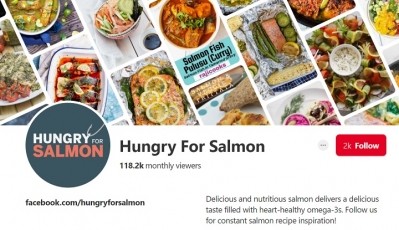5 strategies that set ‘genius’ digital marketers apart from the pack

“A recipe can be very useful for SEO, but it is competitive” with so many bloggers, home cooks, professional chefs and other food and beverage companies posting recipes online, Bill Duffy, associate director of research at L2, told FoodNavigator-USA. This is why, he added, once companies capture consumers’ attention they need to make it as easy as possible for them to buy the branded products, and other ingredients, online immediately.
“McCormick, Betty Crocker and Campbell Soup Co. have been historic leaders in recipe development, and one area where they all have focused on doing a good job lately is linking their products to ecommerce” so that with the simple click of a link, their product is added to consumers’ Amazon, Walmart, Target or other e-retail website, Duffy said.
This strategy not only helps the companies win more sales, it also earned them a spot on L2’s short list of “Genius” brands for 2017, which the digital marketing research firm bases on a review of 1,250 data points, including everything from display advertising to cross platform merchandising to the use of online tools and partnerships to elevate sales and awareness online.
Out of 2,303 brands reviewed by L2 in 2017, only 94 brands – or six food and five beverage brands – earned the highest title of “genius,” according to Duffy. The vast majority, 666 brands, were simply average. While 24% fell into the unenviable “challenged” category and 17% into “feeble.”
What helped set these brands apart – in addition to their strategic use of linking to ecommerce – was their partnerships with other platforms, such as allrecipes.com, that can republish their content beyond the companies’ websites and raise their visibility, Duffy said.
He explained that these partnerships are essential now that Facebook has made it more difficult for brands to push content to users without paying for engagement.
However, he notes, one exception to the general decline in Facebook is McCormick, which Duffy says continues to earn high organic consumer engagement on the social networking website. The secret to the company’s success may seem counter intuitive though: Its recipes and content is not heavily branded and, therefore, can fly under the radar on Facebook and appear in customers’ feeds. And when it comes to Facebook, repetition, not just high-profile flash, can be a winning strategy for building awareness.
Create content beyond recipes
Recipes are not the only way to engage consumers on digital marketing – indeed it may not even be the best way, Duffy said.
More important that what companies say online, is that they say anything at all and are part of the conversation with their consumers. For example, he said, Gatorade made L2’s list of Genius companies in part because it earned the highest number of interactions per tweet on Twitter with frequent reports about sporting events.
“The lesson for brands that want to use Twitter is it has to be a conversation. Gatorade does a great job of staying on top of sporting events and really knowing what its client is looking for and posting about that very specifically,” Duffy explained.
Campbell’s also earned its spot on L2’s list of geniuses by going beyond recipes to create a podcast and showcasing ads and influencer content on three distinct YouTube channels so that it could earn more combined impressions than 80 percent of index brands with active YouTube channels.
Campbell’s also stands out from the competition because it embraces new technology and new strategies fast – giving it a cutting edge with early adopters, Duffy said. For example, he noted the brand was the first food company to have an Alexa skill. This, of course, goes back to the first lesson: make it easy for consumers to shop a brand across channels and platforms.
Consistent merchandising across platforms
In some ways, digital marketing is not that different from traditional marketing. One of those is that consistency, and spend, can help a company win.
For example, Barilla earned a spot on L2’s list in part because it’s consistent merchandising, with bright blue boxes that are easy to recognize, help it stand out, Duffy said.
He added, they also do well because they are willing to pay for top positioning. On Amazon, the company owns 45% of the products in the pasta and noodles category on Amazon’s Best Sellers list, ensuring it is always on screen during a search.
Similarly, it has strong SEO spend on mobile so that it appears against unbranded terms like ‘organic pasta’ and ‘pasta gluten free’. On Google Shopping, its adds appear with similar unbranded search terms, such as ‘whole grain pasta’ and ‘thick spaghetti,’ according to L2
Invest in mobile
Another take away from the report, is that winners in digital marketing are super-charging their investment in mobile and video, Duffy said. He explained that desktop impressions are down 10% and mobile impressions are up 30%.
As for video, he noted that if a company is going to use video it needs to “invest big” and offer a high quality viewing and listening experience in order to cut through the clutter.
“It is really difficult to earn a viral video, so companies like Cheerios who have done it, do it in part because they are willing to spend big and get into some popular conversations,” he explained.





















